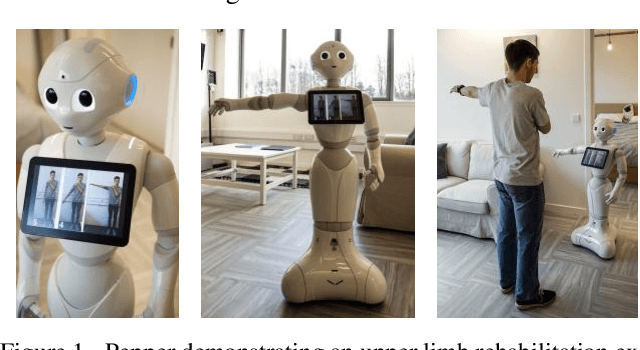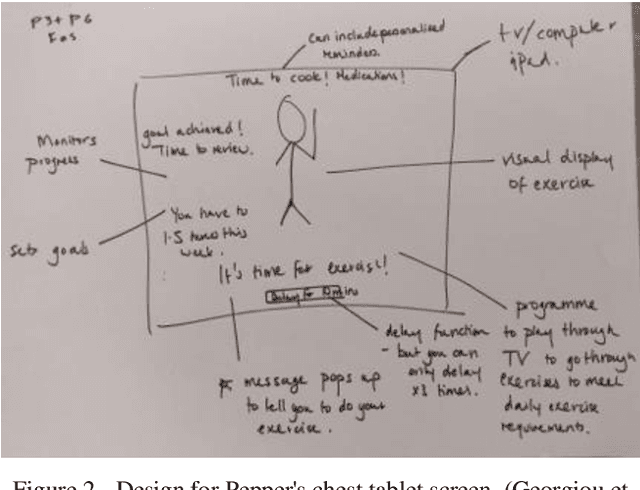Lynne Baillie
Communicating Complex Decisions in Robot-Assisted Therapy
Mar 24, 2023Abstract:Socially Assistive Robots (SARs) have shown promising potential in therapeutic scenarios as decision-making instructors or motivational companions. In human-human therapy, experts often communicate the thought process behind the decisions they make to promote transparency and build trust. As research aims to incorporate more complex decision-making models into these robots to drive better interaction, the ability for the SAR to explain its decisions becomes an increasing challenge. We present the latest examples of complex SAR decision-makers. We argue that, based on the importance of transparent communication in human-human therapy, SARs should incorporate such components into their design. To stimulate discussion around this topic, we present a set of design considerations for researchers.
Addressing Potential Pitfalls of SAR Assistance on the Aging Population
Mar 24, 2023Abstract:In the field of Human Robot Interaction (HRI), socially assistive robots are being investigated to see if they can help combat challenges that can come with aging by providing different forms of support to older adults. As a result, it is imperative that the HRI community are aware of the potential pitfalls that can occur such as over-attachment, over-reliance, and increased isolation. This position paper argues designers should (a) avoid pitfalls that can lead to a negative impact on decline, and (b) leverage SAR decision making to avoid the pitfalls while attaining the benefits of this technology. Finally, we describe the concept for a framework as a starting point for addressing the concerns raised in this paper.
Towards an Adaptive Robot for Sports and Rehabilitation Coaching
Sep 13, 2019


Abstract:The work presented in this paper aims to explore how, and to what extent, an adaptive robotic coach has the potential to provide extra motivation to adhere to long-term rehabilitation and help fill the coaching gap which occurs during repetitive solo practice in high performance sport. Adapting the behavior of a social robot to a specific user, using reinforcement learning (RL), could be a way of increasing adherence to an exercise routine in both domains. The requirements gathering phase is underway and is presented in this paper along with the rationale of using RL in this context.
 Add to Chrome
Add to Chrome Add to Firefox
Add to Firefox Add to Edge
Add to Edge